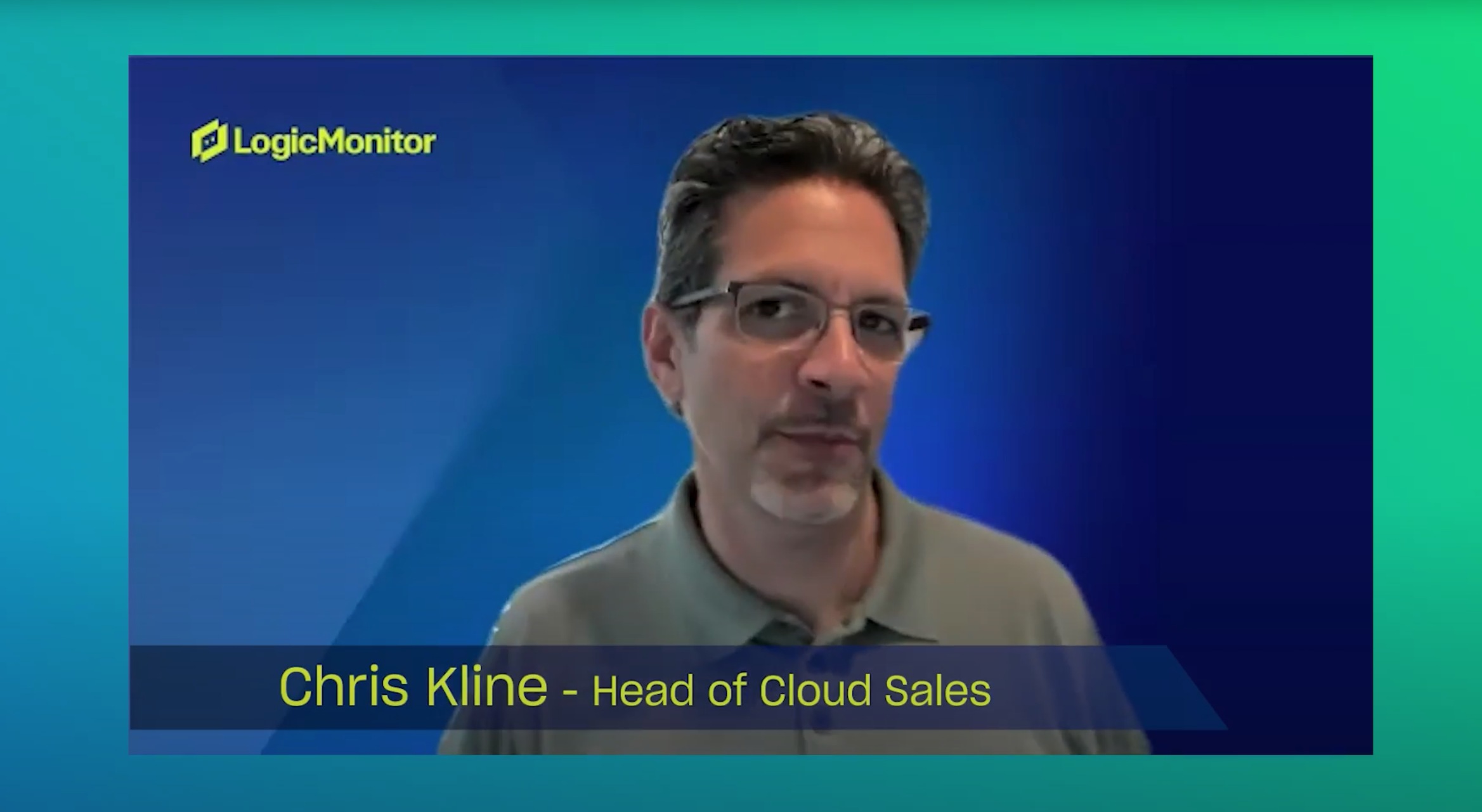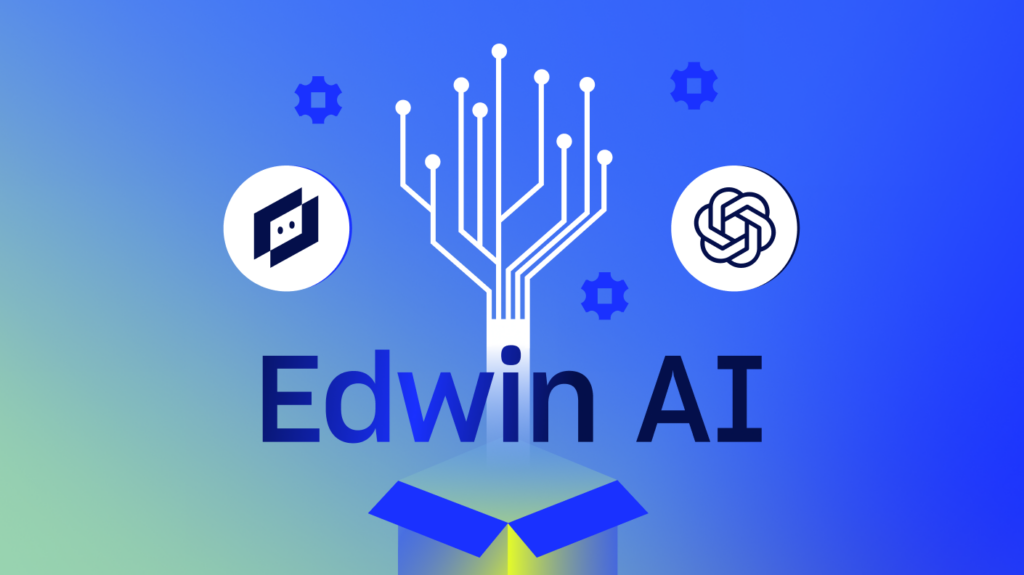We asked Chris Kline, the Head of Cloud Sales at LogicMonitor, to discuss the challenges he sees customers facing with infrastructure monitoring, their changing expectations, the big disruptors in the industry, and how LogicMonitor addresses these modern monitoring needs.
Q: Can you explain the challenges customers face in infrastructure monitoring and how their expectations are changing?
The shift away from on-premises monitoring capabilities and the shift of core monitoring discipline capabilities to the cloud are two big changes in the industry.
I’ve been in the monitoring space for a number of years now, and while none of the problems I see businesses experiencing are new, they are happening faster and with more complexity. The lack of visibility has always been an issue, but now it’s compounded by all the different monitoring tools and protocols out there and the problem has really become, “how can I see everything together?” How can we see and make sense of data that is more complex and more transitory than ever before?
Being able to do that is what leads to the benefits we often talk about like lowering MTTR because really at the heart of everything is that you can find and solve problems faster. And that need persists and increases as the shape or the size of the canvas you’re monitoring grows and changes. It becomes increasingly difficult as you scale to try and understand and assert where those pieces are and how they’re interacting with one another.
Q: What are some big disruptors in the infrastructure monitoring industry?
One of the biggest ones is having everything in-house and on-prem. Years ago customers told me they’d never have virtual machines in production. That was only a pre production kind of a thing, and we clearly have moved from that. Then the discussion became, “we’re never going to break the apps into smaller pieces relating to things like microservices and cloud” and so on. And now we see that many businesses are doing exactly that.
Customers want to get out of the business of care and feeding for the tools themselves, and their expectations are changing as a result. So we’re also seeing the rise of SaaS-based services in every aspect of modern businesses, and it’s true with monitoring as well. Many people are saying, “I don’t want to have to install and configure databases that hold all of the monitoring data. How about I give that whole job to someone else so all I have to do is consume the service?”
And that’s a big shift from where things have been. It also means that onboarding a new system is much faster and the return on investment can happen a lot sooner. We see this extended all the way through monitoring needs, even to the level of not wanting to have to install individual agents to start monitoring things.
Q: How does LogicMonitor’s service model help customers with infrastructure monitoring?
LogicMonitor delivers from a service model that enables customers to be up and running quickly. Because of our agentless model, there’s nothing to install. You just run a collector that’s on the same network as the devices that you wish to monitor, and with nothing more than some credentials, our platform discovers and starts monitoring everything automatically. That’s true of both infrastructure and cloud.
With the shape-shifting nature of cloud services, systems often get spun up and then left forever, with no one really knowing what they do, how much they cost, or what would happen if they were turned off. When you can bring all of that into one place and show detailed information about how all your systems are connected or interacting, you find cost savings right away because you can see what’s not needed.
The ability to do all of these things quickly and well, and to correlate all that data together, is really what sets us apart.
The other big differentiator I see is that we really have our customers’ backs on their journey to hybrid cloud environments or native cloud environments. As one customer said to me lately, their transformation journey feels like driving 100 miles per hour with their eyes closed. We give them control and visibility so they’re not flying blind.
The way we support these customers is by helping them see their entire environment so they can adopt new technologies both on-prem and in the cloud. We ensure that they have the same level of insight and vision as they evolve, whether it’s initial lift-and-shift in the cloud or moving more to the microservices and cloud-native architectures. We’ve got your back all the way along that journey.
Q: What advice would you give to businesses that are transitioning to the cloud right now and what kind of risks and challenges might they expect?
For years there has been this idea that on-prem is bad and cloud is good, but now there’s been a recognized change in philosophy that says neither is good nor bad. They both have strengths and weaknesses, pros and cons. So the question then becomes what makes the most sense for your business? And if you’re going to be using both, how can you have a guaranteed quality of service across the board?
There’s a true need for agility to support a business to move faster while reducing risk. So they can capture new markets and increase their revenue. And while it might be easy to say something like, “I need a monitoring tool” or “I need to reduce MTTR,” I think what’s most important is to remember that all of these systems exist to support businesses and business outcomes. So a key part of any journey is going to be tying those metrics together with context and correlation, moving beyond just looking at metrics to really understand their impact. That’s why our customer success department acts as a strategic partner with customers to make sure they achieve their expected goals.
Q: What do you love about working at LogicMonitor?
Working at LogicMonitor is actually one of the most fun things that I’ve done in my career. First of all, it’s great to work with people who are passionate about what we’re doing. Secondly, it’s so enjoyable to be in a time and place where we can see that we’re solving a problem that’s germane and relevant, rather than old and reloaded. What I mean by that is that we see these problems we’ve been discussing every day, and we know that we’re positioned incredibly well because we can solve so many of those problems by supporting thousands of devices on-prem and hundreds in the cloud. Finally, people love working with us. We treat them well, not only before the sale but after as well. We have enthusiastic support for the kinds of problems that we’re here to solve because we’re solving them in a meaningful way. And that’s a lot of fun.
Subscribe to our blog
Get articles like this delivered straight to your inbox







